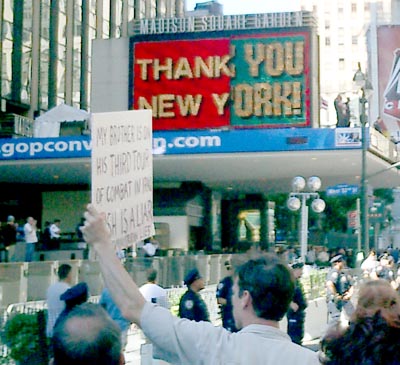So I was listening to a new CD in the car the other day, when I came across a track that really moved me. It actually moved me to tears, right there, in the middle of evening traffic. I don’t know what triggered it, but there was something about the lyrics that resonated with me directly. It was only the second time in my life that I’d been so moved by a song.
It started me thinking…
A few movies through the years have also moved me to the point of tears, and I’m man enough to admit it. Thankfully, I’m not susceptible to sappy tearjerkers like my wife is — but there are some movies that no human being can avoid shedding some tears. The last movie that did it for me was Hotel Rwanda. You’d have to be almost inhuman not to be moved by that movie.
What about television commercials? There’s an incredibly powerful series of commercials with home movie footage of toddlers who are eventually killed in drunk driving accidents. They’re even more powerful to me now that I’ve become a parent.
What about art, or public works of art? Maya Lin’s Vietnam Veterans Memorial (Wall) comes readily to mind. And personally, I find works by Mark Rothko incredibly moving, especially if you understand the personal context of the artist’s life. I’ve seen people weeping as they leave galleries after seeing his work.
And let’s not forget literature. Many can be listed here.
So what makes a piece of music, film, art or writing so effective that it can elicit such an emotional response from its audience? I don’t think it’s as simple as a sentimental subject matter. I think authenticity is key —�to the point of brutal honesty. I also don’t think that the subject matter or concept has to always be one of tragedy or loss. It can be a revelation, a truth, or just a humanist observation.
It also made me wonder — have I ever been that moved emotionally by a piece of graphic design? Emotions can be an incredibly powerful trigger for effective visual communications. It also speaks to the depth of the message — to be more than just a visual pun or superficial witticism.
Editorial design can be extremely powerful emotionally — like these magazine covers after 9/11.


But this type of editorial design is journalism more than design, so it doesn’t really apply
I’ve always admired much of Luba Lukova’s work for its powerful imagery — but her work just goes so far for me.
I’ve thumbed though a few design magazines and annuals, and nothing so far has jumped out as being particularly powerful emotionally. Lots of decent concept; lots of humor and lots of complex messaging. But nothing emotionally powerful…
Hmmm. Is there something about our medium that prohibits us from showing more heart? Is it because of the type of work we do that keeps us emotionally shallow? Or is it simply because we choose not to, because it’s inappropriate or some other reason.
Do you have examples of graphic design work that has affected you emotionally? It can be print, environmental, web, etc.
Show me what moves you.


























As with the Rothko example, I think it helps enormously if theres an existling dialogue between the artist and viewer. In our profession, no one better displays a viewer dialogue than Chris Ware or, better yet, Christoph Niemann
His versatile, annonymous style speak volumes. Some designers I've met have never heard of him, perhaps because he doesnt enter design shows (aside from American Illustration) or send our postcards like the rest of us (we're hacks) or perhaps its due to the lack of style (?).
Last thursday he had a little show on the ninth floor of The New York Times of "1000 spots".
I had to go back on friday to see them up close and personal again. I wept openly. Then I went home and cried some more.
On Dec.14.2005 at 05:28 PM